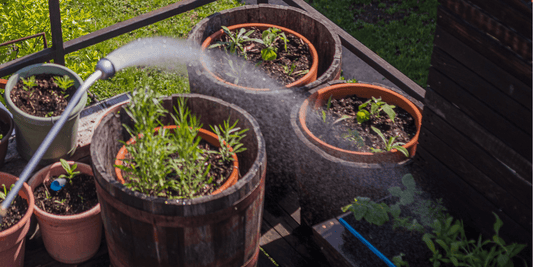Boost Your Water Supply: The Power of Booster Pump Systems
Share
In the intricate network of water supply systems, maintaining optimal pressure levels is paramount for ensuring reliable access to water, whether for domestic, commercial, or industrial purposes. However, fluctuating demands, elevation variations, and aging infrastructure can all pose challenges to achieving consistent water pressure. Enter booster pump systems – the unsung heroes of water distribution networks. In this post, we'll delve into the world of booster pump systems, exploring their functions, applications, and the benefits they bring to the table.
Understanding Booster Pump Systems: At their core, booster pump systems are engineered solutions designed to elevate water pressure within pipelines, effectively "boosting" the flow of water to desired levels. These systems typically comprise pumps, controllers, sensors, valves, and ancillary equipment, all working in harmony to optimize water distribution.
Key Components and Functionality:
- Pumps: The workhorses of booster pump systems, pumps are responsible for drawing water from the source and exerting the necessary force to propel it through the pipelines. Depending on the application and requirements, various types of pumps may be employed, including centrifugal pumps, vertical turbine pumps, and multistage pumps.
- Controllers: Modern booster pump systems are equipped with intelligent controllers that oversee and regulate pump operation. These controllers leverage real-time data from sensors to adjust pump speed, flow rates, and pressure levels, ensuring optimal performance while minimizing energy consumption.
- Sensors: Pressure sensors, flow meters, and other monitoring devices play a crucial role in providing feedback on system conditions. By continuously monitoring parameters such as pressure, flow rate, and temperature, these sensors enable the controller to make data-driven decisions to maintain desired operating conditions.
- Valves and Accessories: Control valves, check valves, pressure relief valves, and other accessories are integrated into the system to regulate flow, prevent backflow, and safeguard against pressure surges or overloads.
Applications and Benefits: Booster pump systems find widespread application across various sectors, including:
- Municipal Water Supply: Ensuring consistent water pressure in distribution networks to meet the needs of residential, commercial, and industrial consumers.
- Building Services: Providing adequate water pressure for firefighting systems, HVAC (heating, ventilation, and air conditioning) systems, and domestic water supply in high-rise buildings and complexes.
- Industrial Processes: Facilitating efficient operation of manufacturing processes, cooling systems, and equipment that rely on pressurized water.
- Irrigation and Agriculture: Optimizing water delivery in agricultural irrigation systems to enhance crop yield and water efficiency.
The benefits of booster pump systems include:
- Improved Water Pressure: Ensures reliable and consistent water pressure at all points of use, mitigating issues such as low flow, inadequate shower pressure, and slow filling times.
- Enhanced System Efficiency: Optimizes energy usage by modulating pump speed and operation based on demand, resulting in lower energy costs and reduced environmental impact.
- Increased Reliability: Minimizes downtime and maintenance requirements, leading to uninterrupted water supply and operational continuity.
- Scalability and Adaptability: Can be tailored to specific requirements and easily integrated into existing water distribution infrastructure, allowing for future expansion or modifications.
Booster pump systems play a crucial role in enhancing the efficiency, reliability, and performance of water distribution networks across various applications. By harnessing advanced technology and intelligent control strategies, these systems ensure a steady and dependable flow of water, even in the face of challenging conditions. As the demand for water continues to rise and infrastructure ages, investing in booster pump systems emerges not only as a practical necessity but also as a sustainable solution for meeting the evolving needs of modern society.



